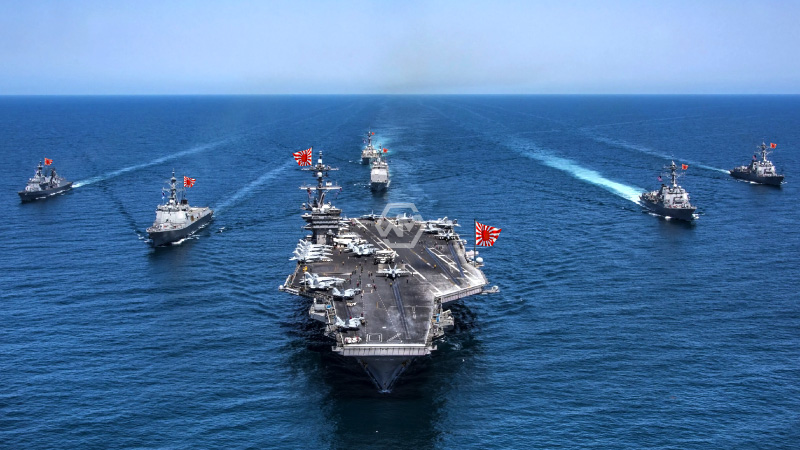It has been a hyperactive timetable for the Indian Naval force over the past week – Indian Maritime Commandants’ Gathering, India-Australia two-sided maritime activity, Global Armada Survey in Japan, and Malabar Maritime Version including the Quad naval forces. And this is being viewed as adding to the Indo-Pacific’s soundness.
Following the incomparable Worldwide Armada audit that Japan facilitated on November 6 at Sagami Narrows, four Quad accomplices – Australia, India, Japan, and the US – will begin the Malabar maritime activity off Yokosuka on Tuesday (November 8). This exercise will close on November 18.
Naval Parade in Japan
The Naval force heads of the four Quad nations met in Tokyo on November 5. They traded sees on “further upgrading between operability” in later versions of the Malabar multilateral maritime activity.
The planning of both the IFR and Malabar practice is huge, coming as they do following China’s rising forcefulness in the Indo-Pacific and North Korea terminating record quantities of rockets.
As it turns out, the IFR denoted the 70th commemoration of Japan’s Oceanic Self-Preservation Power (MSDF) establishment. Around 40 warships from 13 nations met up in Sagami Sound, off Tokyo.
The maritime procession included 38 vessels, 18 from cordial nations like the US, South Korea, England, Australia, Singapore, India, and Thailand. 33 airplanes soared over, including submarine-hunting watch planes and helicopters. India’s two bleeding edge warships, INS Shivalik and INS Kamorta were in this motorcade.
Directing the motorcade, Japanese Top state leader Fumio Kishida said that Japan and similar countries should be ready for circumstances in which “a few nations stomp all over the harmony and security of others through the utilization or danger of power.”
- Japan has hosted a naval parade in Indo-Pacific.
- India, America, Australia, Singapore and many countries took part there.
- Nearly 18 countries took part in this parade with their ships.
In a discourse on board the MSDF helicopter transporter Izumo, Kishida repeated Tokyo’s arrangements to “in a general sense fortify” Japan’s guard capacities in five years or less.
His statement that “one-sided endeavors to change the norm forcibly, like the new intrusion of Ukraine, should never be endured in any locale of the world” is additionally focused on China, which is taking steps to assume control over Taiwan Kishida effectively and is marking regional cases on the Japanese islands in the East China Ocean.
Notwithstanding, it ought to be noticed that the IFR, by its temperament, is an emblematic and cordial motion where the host nations welcome even the naval forces of the nations with which it has ill-disposed relations.
China needed to decline the Japanese greeting to send its vessels to the IFR in this unique situation. What’s more, similarly significant was Japan’s withdrawal of its solicitation to Russia for its attack on Ukraine.
Obviously, by facilitating the IFR, Japan flagged that it is immovably dedicated to the vision of a Free and Open Indo-Pacific. Tokyo would like the worldwide local area to solidify trust in its Self-Protection Powers as a proactive, dependable security accomplice, especially in the oceanic space, where the power balance gives off an impression of being moving toward China’s benefit of late.
That makes sense of why Japan presently reliably sends MSDF ships for comparative occasions abroad, dispatches powers for commitment under its Indo-Pacific Arrangement tasks, and is one of the greatest allies of activities facilitated by associations like the Western Pacific Maritime Conference, ASEAN Provincial Gathering, and ASEAN Protection Pastors Meeting In addition to.



